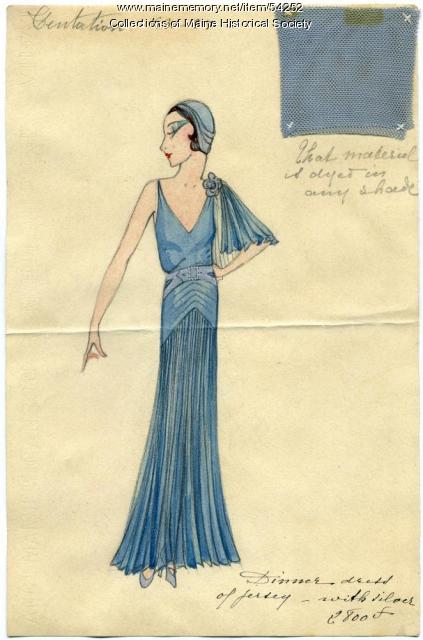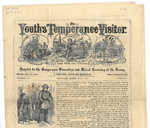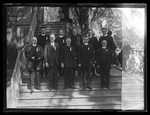Keywords: Maine Collection
- Historical Items (9974)
- Tax Records (0)
- Architecture & Landscape (1797)
- Online Exhibits (160)
- Site Pages (568)
- My Maine Stories (30)
- Lesson Plans (4)
Online Exhibits
Your results include these online exhibits. You also can view all of the site's exhibits, view a timeline of selected events in Maine History, and learn how to create your own exhibit. See featured exhibits or create your own exhibit
Exhibit
Pigeon's Mainer Project: who decides who belongs?
Street artist Pigeon's artwork tackles the multifaceted topic of immigration. He portrays Maine residents, some who are asylum seekers, refugees, and immigrants—people who are often marginalized through state and federal policies—to ask questions about the dynamics of power in society, and who gets to call themselves a “Mainer.”
Exhibit
The Sanitary Commission: Meeting Needs of Soldiers, Families
The Sanitary Commission, formed soon after the Civil War began in the spring of 1861, dealt with the health, relief needs, and morale of soldiers and their families. The Maine Agency helped families and soldiers with everything from furloughs to getting new socks.
Exhibit
Fallen Heroes: Jewish Soldiers and Sailors, The Great War
Thirty-four young Jewish men from Maine died in the service of their country in the two World Wars. This project, including a Maine Memory Network exhibit, is meant to say a little something about some of them. More than just names on a public memorial marker or grave stone, these men were getting started in adult life. They had newly acquired high school and college diplomas, they had friends, families and communities who loved and valued them, and felt the losses of their deaths.
Exhibit
Meshach P. Larry: Civil War Letters
Meshach P. Larry, a Windham blacksmith, joined Maine's 17th Regiment Company H on August 18, 1862. Larry and his sister, Phebe, wrote to each other frequently during the Civil War, and his letters paint a vivid picture of the life of a soldier.
Exhibit
Building the International Appalachian Trail
Wildlife biologist Richard Anderson first proposed the International Appalachian Trail (IAT) in 1993. The IAT is a long-distance hiking trail along the modern-day Appalachian, Caledonian, and Atlas Mountain ranges, geological descendants of the ancient Central Pangean Mountains. Today, the IAT stretches from the Katahdin Woods and Waters National Monument in Maine, through portions of Canada, Greenland, Iceland, the Faroe Islands, and Europe, and into northern Africa.
Exhibit
Like many cities in France, Lewiston and Auburn's skylines are dominated by a cathedral-like structure, St. Peter and Paul Church. Now designated a basilica by the Vatican, it stands as a symbol of French Catholic contributions to the State of Maine.
Exhibit
Port of Portland's Custom House and Collectors of Customs
The collector of Portland was the key to federal patronage in Maine, though other ports and towns had collectors. Through the 19th century, the revenue was the major source of Federal Government income. As in Colonial times, the person appointed to head the custom House in Casco Bay was almost always a leading community figure, or a well-connected political personage.
Exhibit
Cosmopolitan stylings of Mildred and Madeleine Burrage
Born in Portland, sisters Mildred Giddings Burrage (1890-1983) and Madeleine Burrage (1891-1976) were renowned artists and world travelers. Mildred's experiences studying painting in Paris and Italy, and the sisters' trips to Mexico and Guatemala inspired their artwork and shared passions for cosmopolitan and stylish attire. Housed at Maine Historical Society, The Burrage Papers include selections of original advertising drawings called "line sheets" from Parisian fashion houses dating from 1928 to 1936. Images of Madeleine's gemstone jewelry and Mildred's artwork accompany intimate family photographs of the sisters.
Exhibit
History in Motion: The Era of the Electric Railways
Street railways, whether horse-drawn or electric, required the building of trestles and tracks. The new form of transportation aided industry, workers, vacationers, and other travelers.
Exhibit
A Snapshot of Portland, 1924: The Taxman Cometh
In 1924, with Portland was on the verge of profound changes, the Tax Assessors Office undertook a project to document every building in the city -- with photographs and detailed information that provide a unique view into Portland's architecture, neighborhoods, industries, and businesses.
Exhibit
Promoting Rockland Through a Stereopticon, 1875
Frank Crockett and photographer J.P. Armbrust took stereo views of Rockland's downtown, industry, and notable homes in the 1870s as a way to promote tourism to the town.
Exhibit
Photojournalism & the 1936 Flood
Photojournalism & the 1936 Flood examines the monumental destruction caused by the historic flood of 1936 through the comprehensive and innovative photojournalism done by the Guy Gannett Publishing Company in the weeks surrounding the flood.
Exhibit
Maine has some 17 million acres of forest land. But even on a smaller, more local scale, trees have been an important part of the landscape. In many communities, tree-lined commercial and residential streets are a dominant feature of photographs of the communities.
Exhibit
In the early 1600s, French explorers and colonizers in the New World quickly adopted a Native American mode of transportation to get around during the harsh winter months: the snowshoe. Most Northern societies had some form of snowshoe, but the Native Americans turned it into a highly functional item. French settlers named snowshoes "raquettes" because they resembled the tennis racket then in use.
Exhibit
A City Awakes: Arts and Artisans of Early 19th Century Portland
Portland's growth from 1786 to 1860 spawned a unique social and cultural environment and fostered artistic opportunity and creative expression in a broad range of the arts, which flowered with the increasing wealth and opportunity in the city.
Exhibit
Best Friends: Mainers and their Pets
Humans and their animal companions began sharing lives about twenty-five thousand years ago, when, according to archaeological evidence and genetic studies, wolves approached people for food scraps. As agriculture grew and people began storing grains around ten thousand years ago, wild cats helped keep rodents at bay and feline populations thrived by having a steady food source. Over time, these animals morphed into the dogs and cats we know today, becoming our home companions, our pets.
Exhibit
Rum, Riot, and Reform - Temperance Membership
"1848 No. 1, Durham, Maine Painted silk Collections of Maine Historical Society; gift of Orie Louise Knight, 1916 149* The Washingtonian Anti-Drinking…"
Exhibit
Rum, Riot, and Reform - Quenching the Thirst
"… at Grand Lake, Maine Jim M'Kin, 1898 Photograph Collections of Maine Historical Society Maine's Native Americans were noted for their skill as…"
Exhibit
Rum, Riot, and Reform - Reform and Repeal
"… from Beer? Christian Civic League of Maine Collections of Maine Historical Society Coll. 1863, Box 3 The Christian Civic League was founded in 1898…"
Exhibit
Holding up the Sky: Wabanaki people, culture, history, and art
Learn about Native diplomacy and obligation by exploring 13,000 years of Wabanaki residence in Maine through 17th century treaties, historic items, and contemporary artworks—from ash baskets to high fashion. Wabanaki voices contextualize present-day relevance and repercussions of 400 years of shared histories between Wabanakis and settlers to their region.
Exhibit
Sagadahoc County through the Eastern Eye
The Eastern Illustrating and Publishing Company of Belfast, Maine. employed photographers who traveled by company vehicle through New England each summer, taking pictures of towns and cities, vacation spots and tourist attractions, working waterfronts and local industries, and other subjects postcard recipients might enjoy. The cards were printed by the millions in Belfast into the 1940s.
Exhibit
Rum, Riot, and Reform - Business as Usual
"… Beer Book X Portland City Directory 1903 Collections of Maine Historical Society While it was illegal to sell alcohol and saloons did not…"
Exhibit
Rum, Riot, and Reform - Politics and Enforcement
"Murphy Maine, 1872 Collections of Maine Historical Society Francis Murphy gave his first temperance lecture in Portland on April 3, 1870 and soon…"
Exhibit
Rum, Riot, and Reform - Taverns, People, and Scenes
"… Tavern Sign, Maine, mid 19th century Painted wood Collections of Maine Historical Society; gift of Dorothy Plummer, 1985 A86-886 This quizzical…"
























